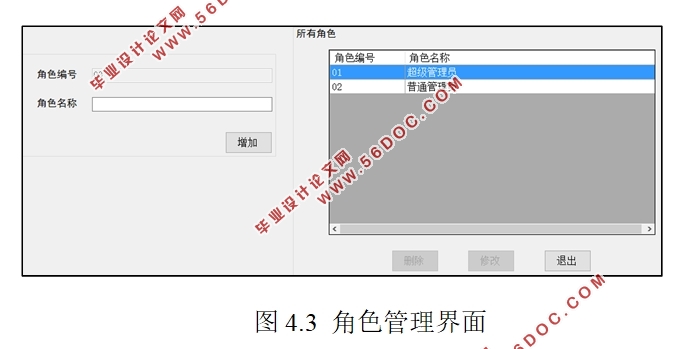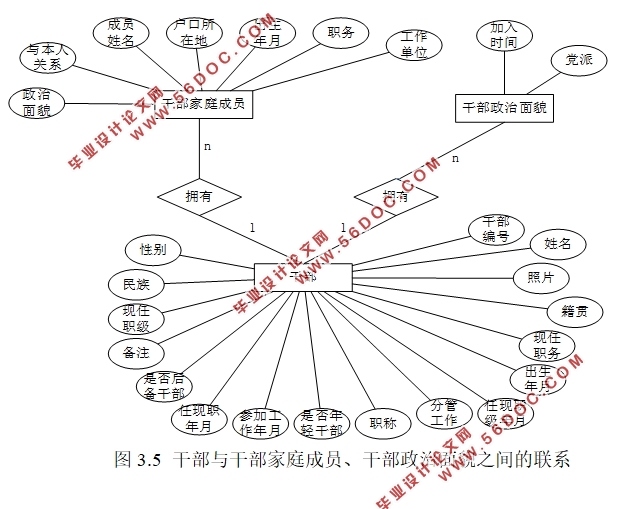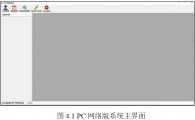干部数据库系统中数据导出和系统管理子系统设计(PC+PAD,C#,C/S架构,SQL)(任务书,开题报告,论文16000字,版程序代码,SQLserver数据库)
摘 要
某省省委宣传部面临人才信息管理的难题,目前使用的人才管理系统已经远远不能满足当下的信息管理需求,在这样的背景下,为了实现人才信息的高效管理急需开发新型“干部信息管理系统”。该项目旨在开发两个版本的系统:一种是安装在PC机上的系统(以下简称“PC版系统”),一种是安装在windows平板电脑上的系统(以下简称“PAD版系统”)。
本文选题来自于上述项目,重点是其中“干部数据导出和系统管理子系统”的设计与实现。该系统采用C/S开发模式,使用SQL Server 2008作为服务器端数据库管理系统,以Visual Studio 2013集成开发环境作为开发平台,使用C#语言进行应用程序开发。本文重点介绍了以下功能的实现过程:系统权限管理、系统数据备份与恢复、干部数据共享。通过测试,本文开发的软件系统基本达到了预期目的,能够投入实际运用。
关键词:干部信息管理系统;信息管理系统;权限管理;数据共享
Abstract
The Provincial Party Committee Propaganda Department of a province meets with difficulties in management of cadre information. Current management system of cadre information is far from really satisfying the needs. Under this background, in order to realize efficient management on cadre information, the Provincial Party Committee Propaganda Department urgently needs a new management system of cadre information. In summary, the goal of exploiting this project is to get two versions system, one is installed in personal computer (hereafter this text will be abbreviated as the version of PC) and the other is installed in windows tablet (hereafter this text will be abbreviated as the version of PAD).
This thesis comes from the above-mentioned project, and the emphasis is the design and implementation of the subsystem in order to export cadre data and conduct systematic management. This system uses the C/S development model, while its server-side uses SQL Server 2008 as the database management system. The system chooses Microsoft Visual Studio 2013 as development tool, using C# language as main program language. This thesis focus on the implements of following functions: system rights management, system database backups and recovery and sharing cadre data. After a series of tests, it proves this system can reach the expected goal and can be put into practice.
Key Words:CadresTalent Information Management System;MIS;authority management;data sharing
本文旨在为某省省委宣传部干部处开发两个版本功能完善的干部数据库系统,PC版系统用于在PC机上安装供工作人员日常使用,PAD版系统在windows平板电脑上安装供领导外出时使用。本文主要的研究内容有:
在PC版系统上实现以下功能:
(1)系统账户权限管理;
(2)系统数据备份与恢复;
(3)干部数据导出
(4)生成数据报表。
在PAD版系统上实现以下功能:
(1)干部数据同步;
(2)干部数据导入;
(3)修改账户名和密码。
本文的组织结构
本文分为六个章节:
第一章:说明了项目提出的背景、相关研究情况及本文重点实现的功能,同时指出了本文的篇章结构;
第二章:说明了干部数据库系统开发的软硬件环境、开发过程中采用的开发工具、开发模式,同时介绍了软件框架设计中的三层架构;
第三章:说明了干部数据库系统的需求分析及总体设计;
第四章:分五个模块展示了干部数据库系统的开发过程,分别是:系统主界面的设计与实现、账户权限管理的实现、系统数据备份与恢复的实现、报表的制作过程以及PAD版系统更新本地数据库的实现;
第五章:测试了干部数据库系统的各个模块,并分析了测试结果;
第六章:是对本文所做工作的总结及展望。
开发的软件环境
干部数据库系统使用C#进行应用程序开发。需要的开发工具如下:
(1)Visual Studio 2013;
(2)SQL Server Express 2014;
(3)Microsoft Office Access 2013。





目 录
第1章 绪论 1
1.1 研究背景 1
1.2 相关研究现状 1
1.2.1 国外研究现状 1
1.2.2 国内研究现状 1
1.3 本文主要工作 1
1.4 本文的组织结构 2
1.5 本章小结 2
第2章 开发技术及开发环境 3
2.1 软硬件环境 3
2.1.1 开发的硬件环境 3
2.1.2 开发的软件环境 3
2.2 开发工具 3
2.2.1 Visual Studio 2013简介 3
2.2.2 SQL Server 2008简介 3
2.2.3 Microsoft Office Access 2013简介 3
2.3 C/S 模式 4
2.4 三层架构 4
2.5 本章小结 5
第3章 系统分析及总体设计 6
3.1 需求分析 6
3.1.1 功能性需求 6
3.1.2 非功能性需求 6
3.2 功能设计 6
3.2.1 PC版干部数据库系统功能设计 6
3.2.2 PAD版干部数据库系统功能设计 8
3.3 程序代码设计 8
3.4 数据库设计 10
3.4.1 数据库概念设计 10
3.4.2 数据库逻辑设计 11
3.5 本章小结 14
第4章 系统实现 15
4.1 系统主界面设计与实现 15
4.1.1 PC版系统主界面设计 15
4.1.2 PC版系统主界面实现 15
4.2 PC版系统账户权限管理 16
4.2.1 角色管理 16
4.2.2 角色权限管理 17
4.2.3 用户账户管理 18
4.3 PC版系统数据备份与恢复 19
4.3.1 系统数据备份 19
4.3.2 系统数据恢复 20
4.4 PC版系统报表的制作 20
4.4.1 报表的总体设计 20
4.4.2 报表的实现 21
4.5 PAD版系统更新本地数据库 22
4.5.1 连接到局域网进行数据同步 23
4.5.2 导入Excel文件更新本地数据 24
4.6 本章小结 26
第5章 系统测试 27
5.1 PC版系统角色管理测试 27
5.2 PAD版系统数据同步测试 29
5.3 本章小结 30
第6章 总结和展望 31
6.1 工作总结 31
6.2 工作展望 31
参考文献 32
致 谢 33
|











